Home>Dining>Events & Etiquette>What Are Acceptable Table Manners?
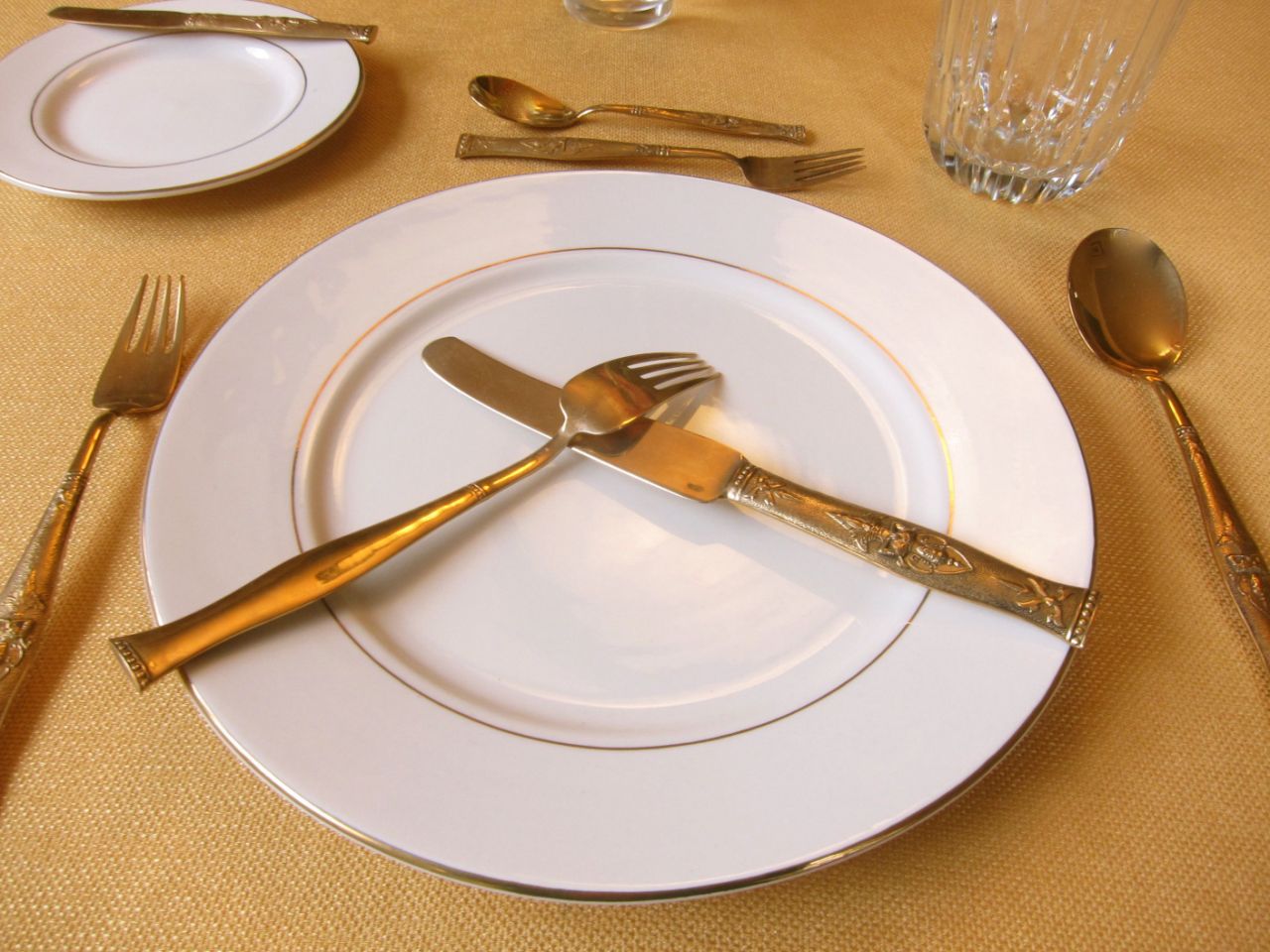

Events & Etiquette
What Are Acceptable Table Manners?
Modified: January 4, 2024
Learn proper table manners for events and etiquette with our comprehensive guide. Impress your guests and make a lasting impression.
(Many of the links in this article redirect to a specific reviewed product. Your purchase of these products through affiliate links helps to generate commission for Storables.com, at no extra cost. Learn more)
Introduction
When it comes to attending formal events or dining in upscale establishments, having a good understanding of table manners is essential. Proper table manners not only showcase your respect for the host and other guests but also enhance the overall ambiance and experience of the meal. Whether you’re attending a business dinner, a wedding reception, or a fancy dinner party, demonstrating proper table etiquette will leave a lasting impression.
In this article, we will explore the key elements of acceptable table manners. From the basic table setting to the proper use of utensils, we will delve into the dos and don’ts of dining etiquette. We will also cover various situations that may arise during the course of a meal, such as handling accidents or mishaps. By the end of this article, you will confidently navigate any dining event with grace and poise.
Before we dive into the specifics of table manners, it’s important to note that different cultures and regions may have their own variations of etiquette. Therefore, it’s always a good idea to familiarize yourself with the customs and traditions of the specific event or location you’re attending.
Now, let’s begin our exploration of acceptable table manners and discover the secrets to dining like a true connoisseur.
Key Takeaways:
- Mastering formal dining etiquette enhances your dining experience and leaves a lasting impression. From basic table manners to handling mishaps gracefully, etiquette fosters respect, appreciation, and enjoyment at any formal event.
- Proper use of utensils, napkin etiquette, and seating arrangements are essential for navigating formal dining with confidence and sophistication. Embrace dining etiquette to create a harmonious atmosphere and foster meaningful connections.
Read more: What Are Table Manners?
Basic Table Manners
Before delving into the intricacies of utensil use and specialized etiquette, it’s important to grasp the fundamental basics of table manners. These timeless practices form the foundation of polite dining and set the tone for a harmonious meal.
First and foremost, observe proper posture at the table. Sit up straight, with your back against the chair and your feet flat on the floor. Avoid slouching or leaning on the table. This not only displays respect but also aids in digestion.
Next, be mindful of your conversations. Keep your voice at a moderate volume, being considerate of those around you. Engage in pleasant, appropriate conversation topics, avoiding contentious subjects such as politics or personal matters.
When it comes to using your smartphone or other electronic devices, it is best to keep them off the table or discreetly stowed away. Giving your full attention to the present company shows respect and prevents distractions.
Another essential aspect of basic table manners is to wait until everyone is seated before beginning to eat. Show patience and courtesy by not starting your meal until the host or the eldest person at the table initiates.
Additionally, be mindful of your dining pace. Take small, measured bites, and chew with your mouth closed. Avoid speaking while your mouth is full, as it can be off-putting to others.
Lastly, remember to express gratitude for the meal. Once the meal is complete, thank the host or hostess for their hospitality. A simple, sincere “thank you” goes a long way in showing your appreciation.
By adhering to these basic table manners, you will demonstrate your etiquette prowess and make a positive impression on those around you. Next, let’s explore the proper use of utensils to elevate your dining experience even further.
Proper Use of Utensils
Mastering the art of using utensils is a hallmark of refined table manners. Knowing which utensil to use for each course and how to handle them with grace and precision will elevate your dining experience. Let’s dive into the proper use of utensils:
1. Forks: The fork is a versatile utensil used for various purposes. Start with the outermost fork for the first course and work your way inward with each subsequent course. Use the salad fork for salads, appetizers, and lighter dishes, and the dinner fork for the main course.
2. Knives: Knives are used for cutting, spreading, and assisting with eating. Place your knife on the right side of the plate, with the cutting edge facing inward. When cutting food, use the knife with your right hand and hold the fork with your left hand. Once the food is cut, rest the knife on the edge of your plate, switch the fork to your right hand, and continue eating.
3. Spoons: Use spoons for soups, stews, and desserts. The soup spoon is larger and rounder, while the dessert spoon is smaller. Hold the spoon with your right hand, and avoid slurping or making excessive noise while eating soups or broths.
4. Glasses: Properly used glassware adds elegance to the dining experience. The water glass is typically placed directly above the knife, while other glasses, such as wine or champagne glasses, are positioned to the right of the water glass. When toasting, raise your glass, make eye contact, and say a simple “Cheers!” or appropriate toast.
5. Bread and Butter Knife: The bread and butter knife is usually found on the bread plate or resting across the top of your main plate. Use this utensil to spread butter or other condiments onto your bread. Break off small pieces of bread and butter them one piece at a time rather than buttering the entire slice.
Remember to use utensils from the outside in, with each course. Place your utensils neatly on the side of your plate between bites or when you are finished eating. Do not place them on the tablecloth or use them to gesture or point while talking. By using utensils properly, you demonstrate your knowledge of formal dining and enhance the overall dining experience.
Now that you’re familiar with the proper use of utensils, let’s explore the etiquette surrounding the use of napkins.
Napkin Etiquette
Proper handling of your napkin is an important aspect of table manners. The napkin serves both a practical and symbolic purpose during a meal, and understanding how to use it correctly will showcase your sophistication and respect for the dining experience.
Upon sitting down at the table, take your napkin from its designated placement, usually either on the plate or to the left of it. Unfold it discreetly and gently place it on your lap, with the fold facing towards you. The napkin should cover your lap fully but should not be used as a bib; avoid tucking it into your collar.
Throughout the meal, use your napkin to gently dab or wipe your mouth and surrounding area as needed. Avoid using the napkin excessively or aggressively, as it can be perceived as rude or distracting to others at the table.
If you need to briefly excuse yourself from the table during the meal, place your napkin loosely on the back of your chair. This signals to the server and other guests that you will return shortly. When you’re ready to leave the table at the end of the meal, neatly fold your napkin and place it to the left or on the plate, depending on the establishment’s specific guidelines.
It’s important to note that if the meal includes multiple courses, you should not refold the napkin between courses. Instead, leave it unfolded on your lap for the duration of the meal. Only once the meal has concluded should you fold and place the napkin aside.
Lastly, it’s considerate to assist fellow diners if they are in need of a napkin. If you notice someone has accidentally dropped their napkin or requires a fresh one, discreetly offer assistance by passing them a spare napkin or notifying the server.
By adhering to proper napkin etiquette, you show respect for the meal and create a pleasant atmosphere for yourself and others at the table. Next, let’s explore the etiquettes surrounding seating arrangements at formal events.
Seating Etiquette
Seating arrangements at formal events can often be a bit daunting. However, understanding the basic principles of seating etiquette will help you navigate any dining situation with ease.
When you arrive at the dining area, wait for the host or hostess to indicate where you should sit. They will typically guide you to your assigned seat or provide instructions on where to seat yourself. If there are no specific instructions, it is customary to allow the elderly, honored guests, or the host’s VIPs to choose their seats first.
Once you find your seat, approach it from the left side, in order not to interrupt other guests. Before sitting down, gently move the chair back, making sure not to make any noise or disturb nearby guests.
As a general rule, the guest of honor or the most senior person present is seated to the right of the host, while the second most important person is seated to the host’s left. The remaining seats are usually arranged in alternating gender order.
At the table, it’s important to observe personal space. Keep your elbows slightly away from your body to avoid intruding on your neighbor’s space. Avoid leaning on the table, as it can be perceived as disrespectful and may disrupt the table setting.
While seated, engage in conversation with those around you, being mindful of including everyone in the discussion. Avoid turning your back completely on anyone at the table and make an effort to make eye contact with those you are speaking to.
If you need to leave the table temporarily, politely excuse yourself and leave the table discreetly. Do so between courses or during a natural pause in the conversation. Avoid leaving the table during the service of a course or when a conversation is ongoing.
Remember to always be considerate and respectful to your fellow diners. By following these seating etiquette guidelines, you will seamlessly integrate into any formal dining event and make a positive impression on those around you.
Next, let’s delve into the etiquettes surrounding bread and butter during a meal.
Read more: What Are Singapore’s Table Manners?
Bread and Butter Etiquette
Understanding the proper etiquette for handling bread and butter during a meal can enhance your dining experience and demonstrate your knowledge of refined table manners. Let’s explore the key etiquettes surrounding bread and butter:
1. Bread Placing and Breaking: When bread is served at the table, it is customary to wait until everyone has been served before reaching for a piece. Once you have been served, take a small piece of bread from the bread basket and place it on your bread plate or the side of your dinner plate. Do not butter the entire slice of bread at once, but rather break off small pieces and butter them one at a time.
2. Butter Spreading: When spreading butter on your bread, use the individual butter knife or a butter spreader provided on the table. With a small amount of butter on the tip of the knife, gently spread it onto your bread piece by piece. Avoid using excessive amounts of butter, as it can be perceived as wasteful or gluttonous.
3. Eating Bread: When eating bread, tear off small bite-sized pieces and place them on your fork or directly into your mouth. Do not bite directly into the whole slice of bread. Avoid slathering butter onto your bread while it is in your mouth, as this can be seen as impolite.
4. Passing Bread: If someone at the table requests the bread basket or asks for a piece of bread, politely pass it along to them. Offer the basket with the left hand while using your right hand to hold the bread tongs or serve yourself a piece of bread. Pass the basket clockwise around the table, allowing others to help themselves before taking another piece for yourself.
5. Bread Placement: If you need to temporarily leave the table, place your bread plate with any remaining bread on your chair or just above the plate, indicating that you intend to return. When you have finished your meal, you can leave the bread plate empty or with any crumbs neatly stacked on it.
Remember, bread and butter are commonly served at the beginning of a meal and should be enjoyed in moderation. By following these bread and butter etiquettes, you will showcase your gracefulness and respect for the dining experience.
Next, let’s explore the etiquettes surrounding soups and salads during a formal meal.
When dining at a table, always wait for everyone to be served before starting to eat. This shows respect for your dining companions and ensures everyone can enjoy the meal together.
Soup and Salad Etiquette
Knowing the proper etiquette for enjoying soups and salads will ensure you navigate formal dining situations with elegance and poise. Let’s delve into the etiquettes surrounding soups and salads:
1. Soup Etiquette: When served soup as part of a formal meal, remember these guidelines:
– Begin eating soup by using the spoon furthest from your plate. Work your way inwards with each subsequent course.
– Use the side-to-side motion of the spoon to enjoy soup, rather than slurping or making excessive noise.
– When the soup bowl is nearly empty, tilt it away from you to collect the last bits of soup.
– Place your spoon in the bowl or on the soup plate when you have finished eating.
2. Salad Etiquette: When enjoying a salad course, keep these etiquettes in mind:
– Use the designated salad fork, which is usually the outermost fork on the table setting.
– Cut large salad leaves into bite-sized pieces using the edge of your fork or knife.
– Toss your salad gently to ensure even distribution of the dressing throughout the leaves.
– When eating a salad with your fork, avoid spearing or excessively twirling the salad on the fork.
– After eating your salad, position your fork diagonally across the plate, with the tines facing down.
3. Interacting with Dressings and Condiments:
– Avoid drowning your salad in dressing. Use a moderate amount and toss it well to coat the leaves evenly.
– If salad dressings, oils, or other condiments are served in separate containers, use a small spoon or a similar utensil to apply them to your salad.
– Remember to be considerate when using shared condiments, ensuring there is enough for everyone at the table.
4. Handling Salad and Soup Bowls:
– Lift and tilt the soup bowl away from you when scooping the last few spoonfuls of soup.
– Use the serving utensils provided to serve yourself or others from shared salad bowls.
– Avoid picking up or bringing the soup or salad bowl close to your face when eating.
– Use the soup or salad spoon provided, rather than your own utensils, to transfer food to your plate or directly into your mouth.
Observing soup and salad etiquettes will allow you to enjoy these courses gracefully and respectfully at any formal dining event or upscale restaurant. By understanding and following these guidelines, you demonstrate your knowledge and respect for proper table manners.
Next, let’s explore the etiquettes surrounding the main course during a formal meal.
Main Course Etiquette
As the centerpiece of a formal meal, the main course holds great importance. Knowing the proper etiquette for handling and enjoying the main course will elevate your dining experience. Let’s delve into the etiquettes surrounding the main course:
1. Handling Cutlery: When the main course is served, you may be presented with various utensils. Use the appropriate fork and knife for the main course. Hold the knife with your right hand and the fork with your left hand. Be mindful of switching hands when needed.
– Cut one bite-sized portion of the main course at a time and then rest your knife on the edge of the plate while you eat.
– As a general rule, cut small, manageable portions to avoid awkward or messy bites.
2. Proper Usage: Use the proper utensils to enjoy the main course:
– Use your fork to steady the food while cutting, then switch the fork to your right hand to enjoy the bite.
– When eating meat, use your knife and fork to cut and eat one piece at a time, rather than cutting all the pieces at once.
– Avoid using your hands to pick up large pieces of food, such as chicken legs or chops, unless it is specifically indicated or customary. If needed, discreetly use your utensils to assist in deboning or separating the meat.
3. Table Conversation: Engage in pleasant and appropriate conversation during the main course. Avoid discussing controversial topics or speaking with food in your mouth.
– Be attentive and engage with those around you, showing interest in their conversation.
– Make an effort to include everyone at the table, ensuring everyone has a chance to contribute and be heard.
4. Pace and Enjoyment: Take your time to enjoy the main course, savoring each bite and appreciating the flavors. Avoid rushing or eating too quickly, as it can disrupt the flow of the meal. Be mindful of the pace of others at the table and coordinate your eating accordingly, so everyone can enjoy their meal together.
5. Respect for Service Staff: Show gratitude toward the waitstaff by using appropriate gestures and words. Use “please” and “thank you” when requesting items or receiving assistance. If you need something from the waitstaff during the main course, politely make eye contact and use a discreet hand gesture to signal for their attention.
By adhering to these main course etiquettes, you will showcase your refined table manners and enhance the overall dining experience for yourself and others. With the main course done, let’s move on to discuss beverage etiquettes.
Beverage Etiquette
Beverage etiquette is an important aspect of formal dining, as it showcases your knowledge of proper table manners and adds elegance to the overall dining experience. Let’s explore the etiquettes surrounding beverages:
1. Water Service: Water is typically served at the table, either in individual glasses or a shared water pitcher. Keep the following in mind:
– When the water is being poured, hold your glass slightly tilted towards the server to indicate that you would like to have it filled.
– If you are not drinking water, it is still polite to acknowledge the water service by placing your hand gently over the top of your glass when it is being offered.
– Take small sips of water throughout the meal to cleanse your palate and remain hydrated.
2. Wine and Other Alcoholic Beverages: If alcoholic beverages are served during the meal, follow these guidelines:
– When wine is poured for you, hold the stem of the glass instead of touching the bowl so as not to affect the temperature of the wine.
– If you prefer not to consume alcohol, kindly decline with a simple “No, thank you.” Avoid giving lengthy explanations.
– Pace your consumption of alcoholic beverages, moderate your intake, and be mindful of those around you.
3. Toasting Etiquette: Toasting is a common part of formal dining events. Here’s what you should know:
– When a toast is being made, raise your glass and make eye contact with the person giving the toast. Avoid crossing arms with others while toasting.
– You may choose to take a small sip or simply touch your lips to the glass without drinking, depending on your personal preferences and the occasion.
– Be prepared with a short and appropriate response if you are being toasted or asked to make a toast.
4. Non-Alcoholic Alternatives: If you prefer non-alcoholic alternatives or if they are provided at the table, adhere to these etiquettes:
– Treat non-alcoholic beverages with the same respect as alcoholic ones. Use the appropriate glassware and consume them in moderation.
– When served a non-alcoholic drink, express gratitude and handle it as you would any other beverage.
Remember, beverage etiquettes are not just about the act of consuming drinks, but also about showing respect and appreciation for the service provided. By following these guidelines, you will exude sophistication and enhance the overall dining experience.
Now, let’s move on to discuss the etiquettes surrounding desserts during a formal meal.
Read more: What Are The Table Manners In Japan?
Dessert Etiquette
As the finale of a formal meal, dessert is a sweet and satisfying way to conclude the dining experience. Understanding the etiquettes surrounding desserts will ensure you enjoy this course with poise and elegance. Let’s explore the etiquettes for indulging in desserts:
1. Timing: Dessert is typically served after the main course has been cleared. Wait patiently for the dessert to be presented to the table, and refrain from reaching for it until everyone has been served. In some formal settings, dessert may be served individually, while in others, it may be presented on a shared platter for guests to help themselves.
2. Utensils: Desserts may require specific utensils to enjoy them properly. Here are some common scenarios:
– Cake and pastries: Use a fork to cut small, manageable bites of cake or pastries. If a dessert fork is provided, use it instead of your main course fork.
– Pies and tarts: Use a fork to cut a small portion of the pie or tart. If the filling is runny, use a spoon to ensure you capture all the deliciousness.
– Ice cream and sorbet: Use a dessert spoon to scoop small bites of frozen treats, savoring the flavors as they melt in your mouth.
– Miscellaneous desserts: Follow any specific instructions given by the server or host regarding how to best enjoy a unique or signature dessert.
3. Manner of Eating: When enjoying dessert, pay attention to the following etiquettes:
– Take small, delicate bites and savor the flavors. Desserts are often meant to be savored slowly.
– Avoid talking with a mouthful of dessert. Finish chewing and swallow before engaging in conversation.
– If there are multiple dessert options available, choose one and enjoy it without feeling obligated to try everything.
– Express your appreciation for the dessert by complimenting the host or hostess, or by making a positive remark about the dessert’s taste or presentation.
4. Pairing with Beverages: Consider pairing your dessert with an appropriate beverage, such as coffee, tea, or a dessert wine, if offered. Choose a beverage that complements the flavors of the dessert and enhances your overall enjoyment.
Remember, dessert is the final course of the meal, and it should be enjoyed with a sense of bliss and contentment. By adhering to these dessert etiquettes, you demonstrate your respect for the culinary experience and the efforts of the host or hostess.
Now that we’ve covered dessert etiquettes, let’s explore the etiquettes for handling accidents or mishaps that may occur during a formal meal.
Etiquette for Handling Accidents or Mishaps
Accidents and mishaps can happen, even in the most formal dining settings. It’s important to handle these situations gracefully and with poise, without causing undue attention or distress. Here are some etiquettes to keep in mind when faced with a dining mishap:
1. Spills and Drops: If you accidentally spill a drink or drop a utensil or food item, remember these guidelines:
– Remain calm and composed. Do not make a big fuss or draw unnecessary attention to the incident.
– Use your napkin to carefully clean up any spills or mess on the tablecloth or your immediate area.
– If the spillage extends beyond your immediate vicinity, discreetly notify the waitstaff, who will assist in cleaning it up.
– Apologize if your accident affects others nearby and offer to cover any damages if necessary.
2. Bone or Object in Food: Should you encounter a bone or foreign object in your food:
– Remain composed and discreetly remove the object from your mouth using your spoon or napkin.
– Avoid making a scene or drawing attention to the situation.
– Politely inform your server about the object or bring it to their attention, so they can address the issue promptly.
– Depending on the severity of the incident, the establishment may offer a replacement or alternative dish.
3. Food Allergies or Restrictions: If you have specific dietary restrictions or allergies that are not known beforehand:
– It’s best to inform your host or the waitstaff about your dietary considerations ahead of time.
– If a dish is served that you are unable to eat, politely decline it without drawing unnecessary attention.
– Focus on enjoying the items that align with your dietary needs and engage in conversation to divert attention from the dish you’re avoiding.
4. Physical Discomfort: In the event that you experience discomfort or an illness during the meal:
– Remember to excuse yourself quietly and discreetly from the table, if necessary.
– Seek assistance from the server or host if you require medical attention or assistance.
– When returning to the table, offer a brief explanation to those nearby, but avoid going into detail.
– Continue with the meal, focusing on lighter items to ease any discomfort.
Remember, accidents and mishaps can occur to anyone. It’s important to handle these situations with grace and discretion. By following these etiquettes, you can address and navigate dining mishaps without disrupting the flow or atmosphere of the meal.
Now that we’ve explored etiquettes for handling accidents and mishaps, let’s conclude our discussion on formal dining etiquette.
Conclusion
Navigating formal dining events with grace and poise requires a solid understanding of proper table manners and etiquette. By adhering to these etiquettes, you can confidently participate in any formal dining setting, leaving a lasting impression on your hosts and fellow guests.
From the basics of table manners to the proper use of utensils, napkin etiquette, and seating arrangements, each aspect plays a crucial role in creating a refined and enjoyable dining experience.
As you progress through the courses, remember to handle bread and butter with finesse, savor soups and salads with elegance, enjoy the main course with proper utensils, and appreciate the art of dessert. Along the way, demonstrate gratitude for the service provided and engage in thoughtful conversation.
In the event of accidents or mishaps, maintain composure, handle them discreetly, and avoid drawing unnecessary attention. Being considerate of others at the table and responding with grace in challenging situations will showcase your social finesse.
Ultimately, formal dining etiquette is about more than just following a set of rules. It’s about fostering an environment of respect, appreciation, and enjoyment. By embracing these etiquettes, you can enhance your dining experiences, create a harmonious atmosphere, and foster meaningful connections with those around you.
So, whether you are attending a business dinner, a wedding reception, or a fancy dinner party, let your knowledge of formal dining etiquette guide you in conducting yourself with confidence, sophistication, and impeccable manners.
Now, go forth and embrace the art of dining etiquette, bringing elegance and grace to every formal dining occasion.
Frequently Asked Questions about What Are Acceptable Table Manners?
Was this page helpful?
At Storables.com, we guarantee accurate and reliable information. Our content, validated by Expert Board Contributors, is crafted following stringent Editorial Policies. We're committed to providing you with well-researched, expert-backed insights for all your informational needs.

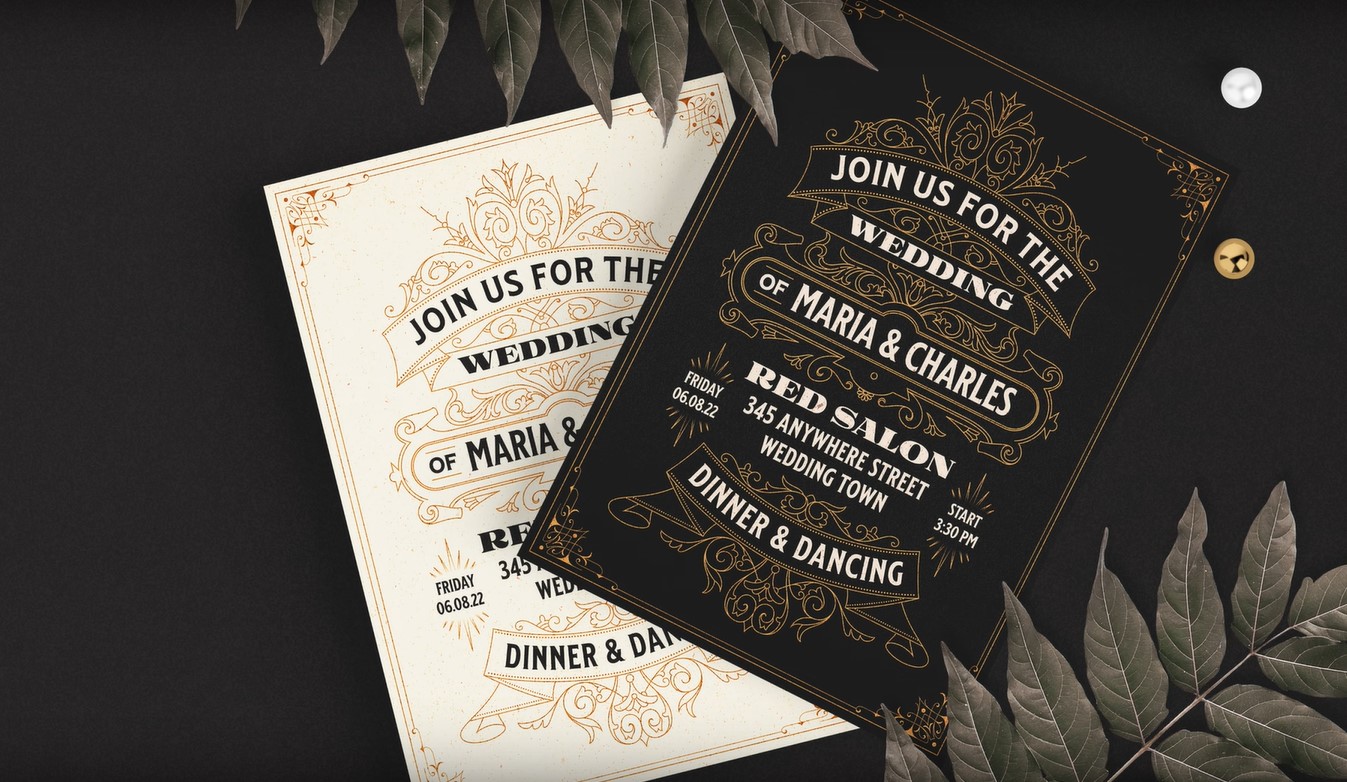
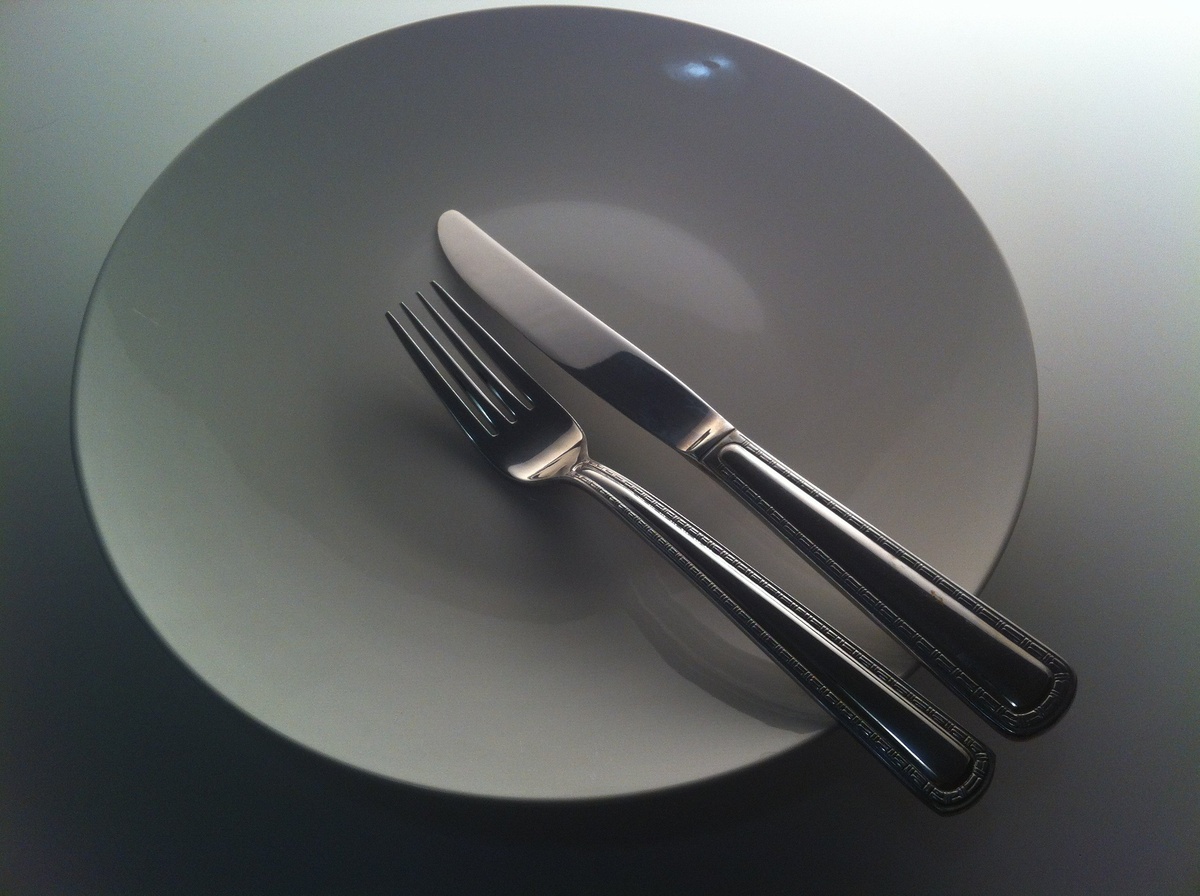

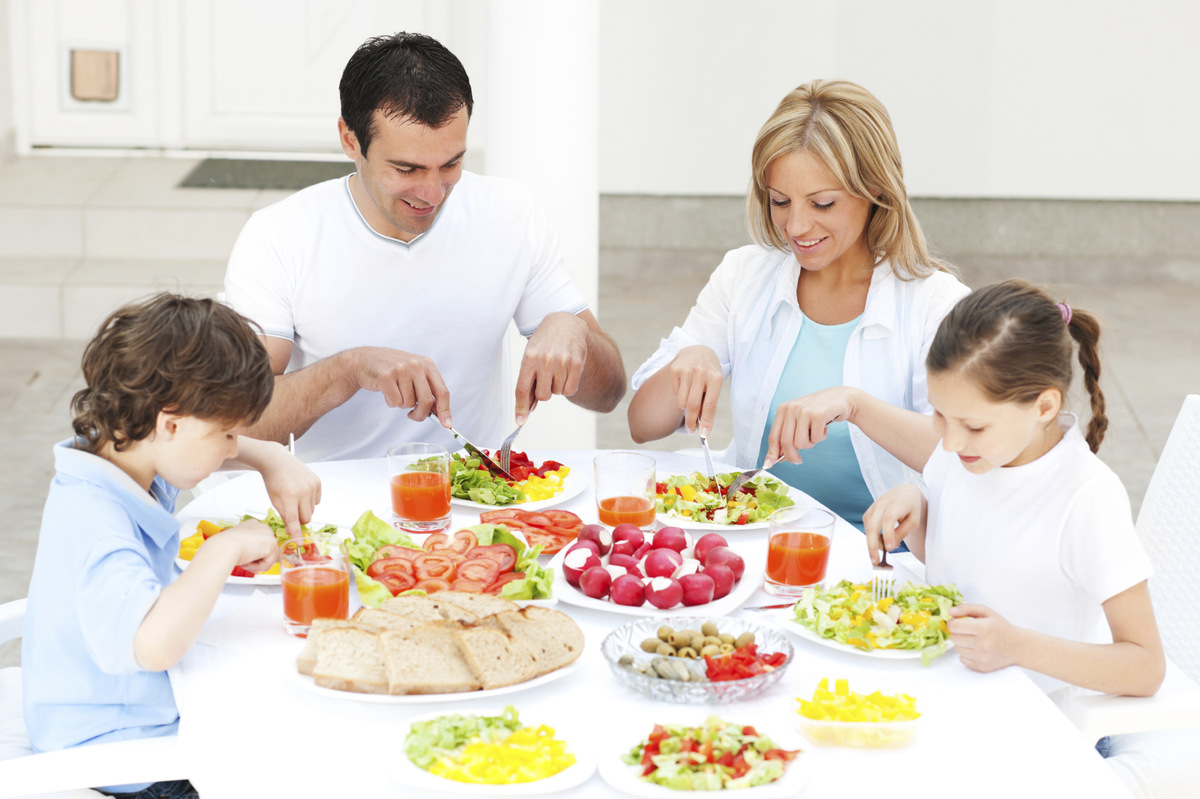
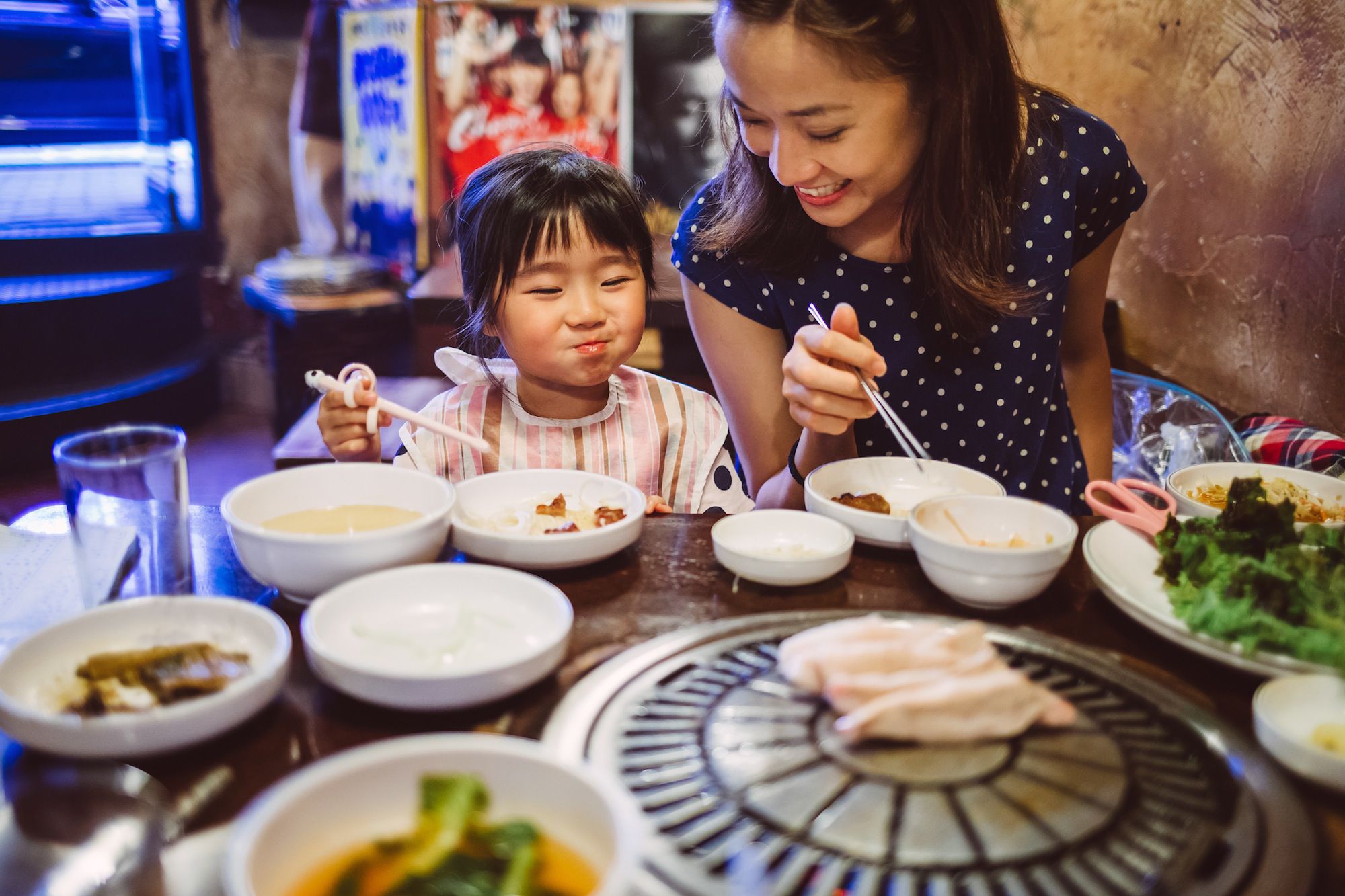
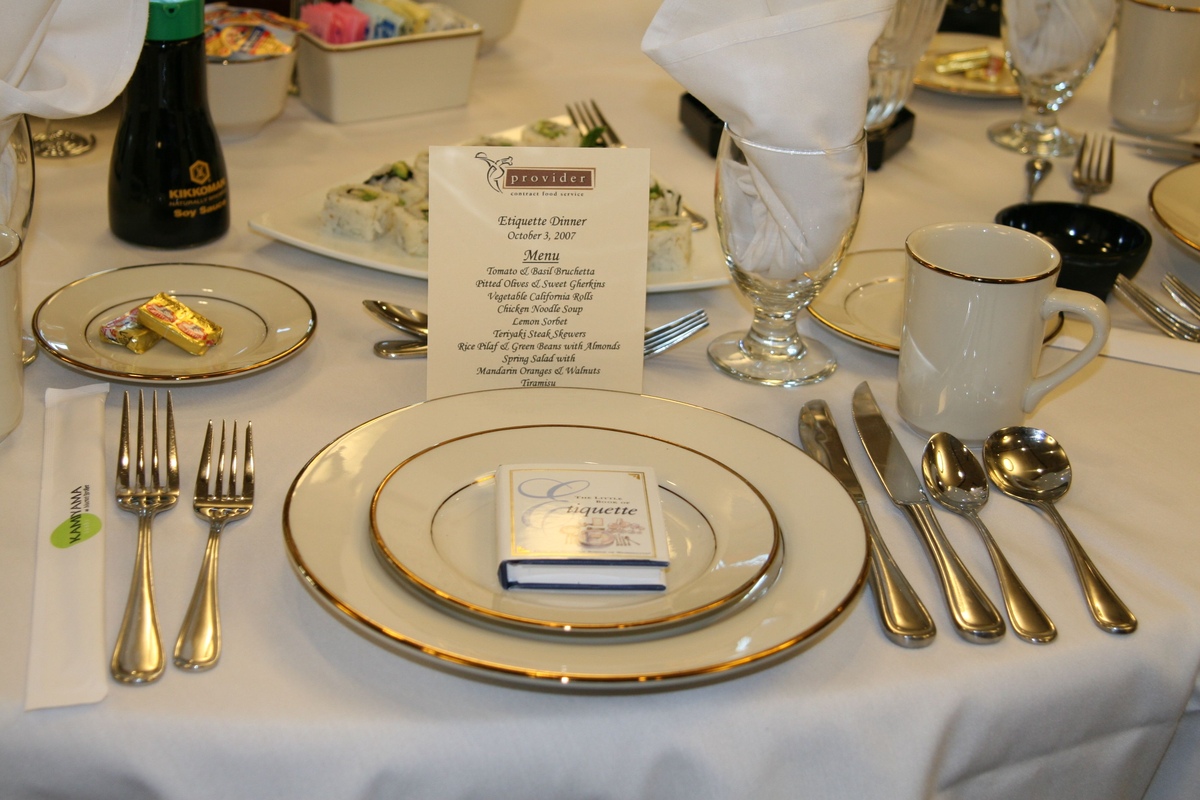

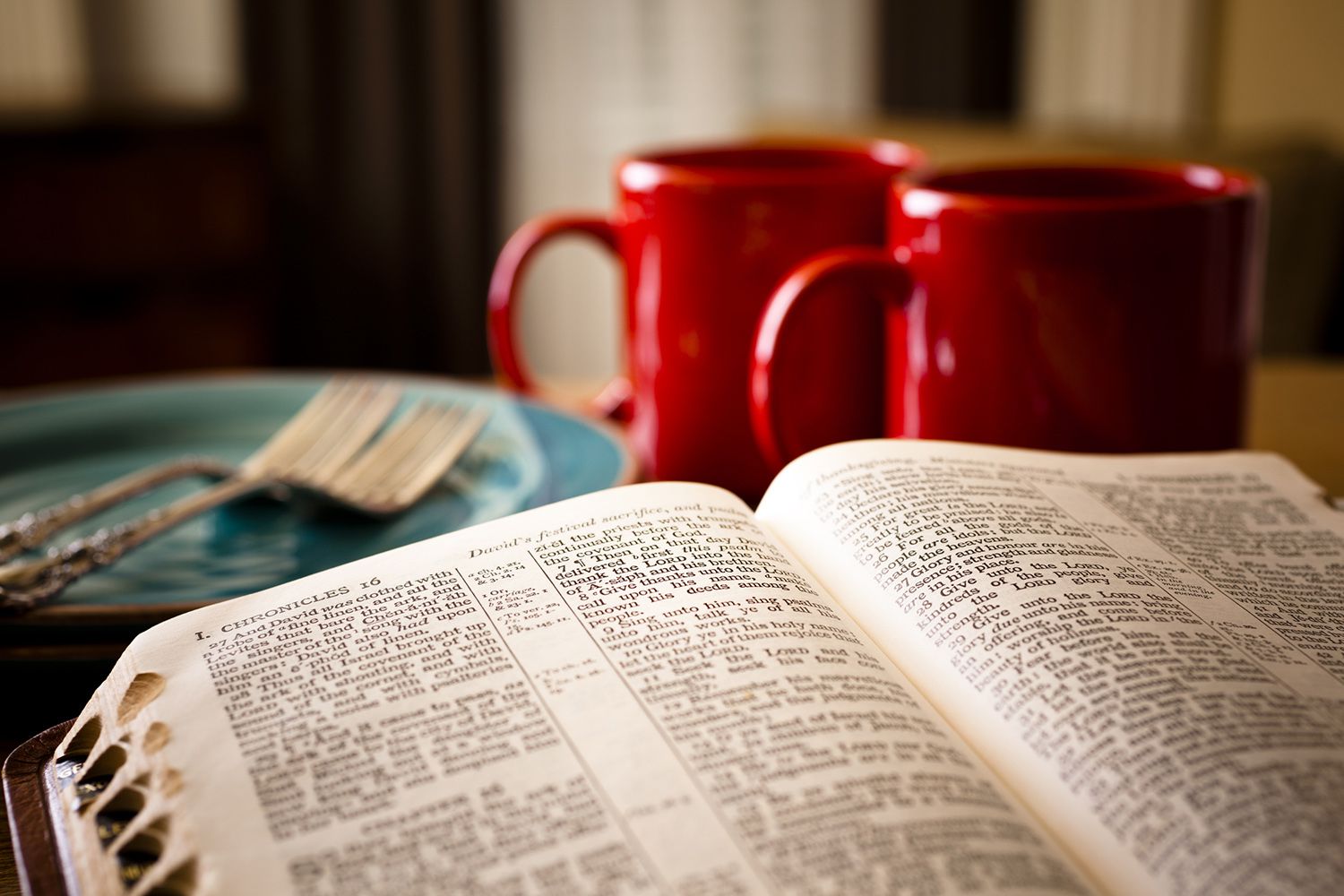
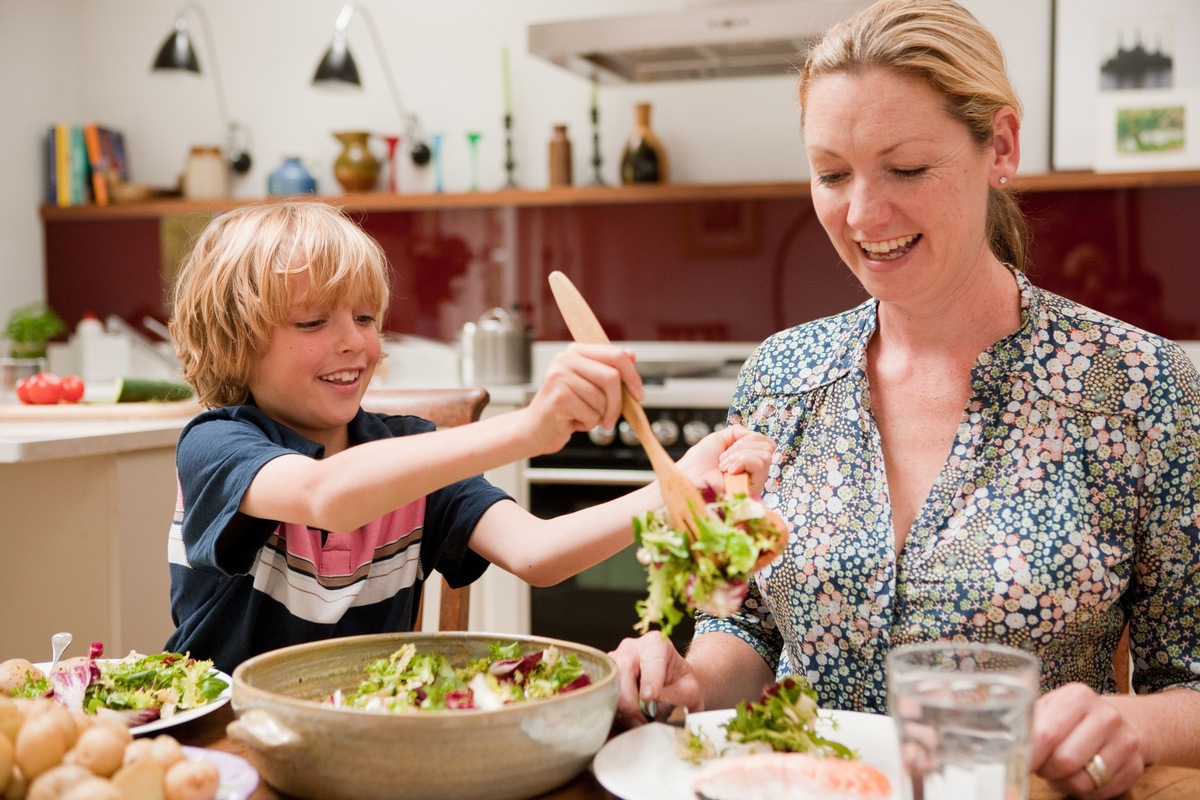


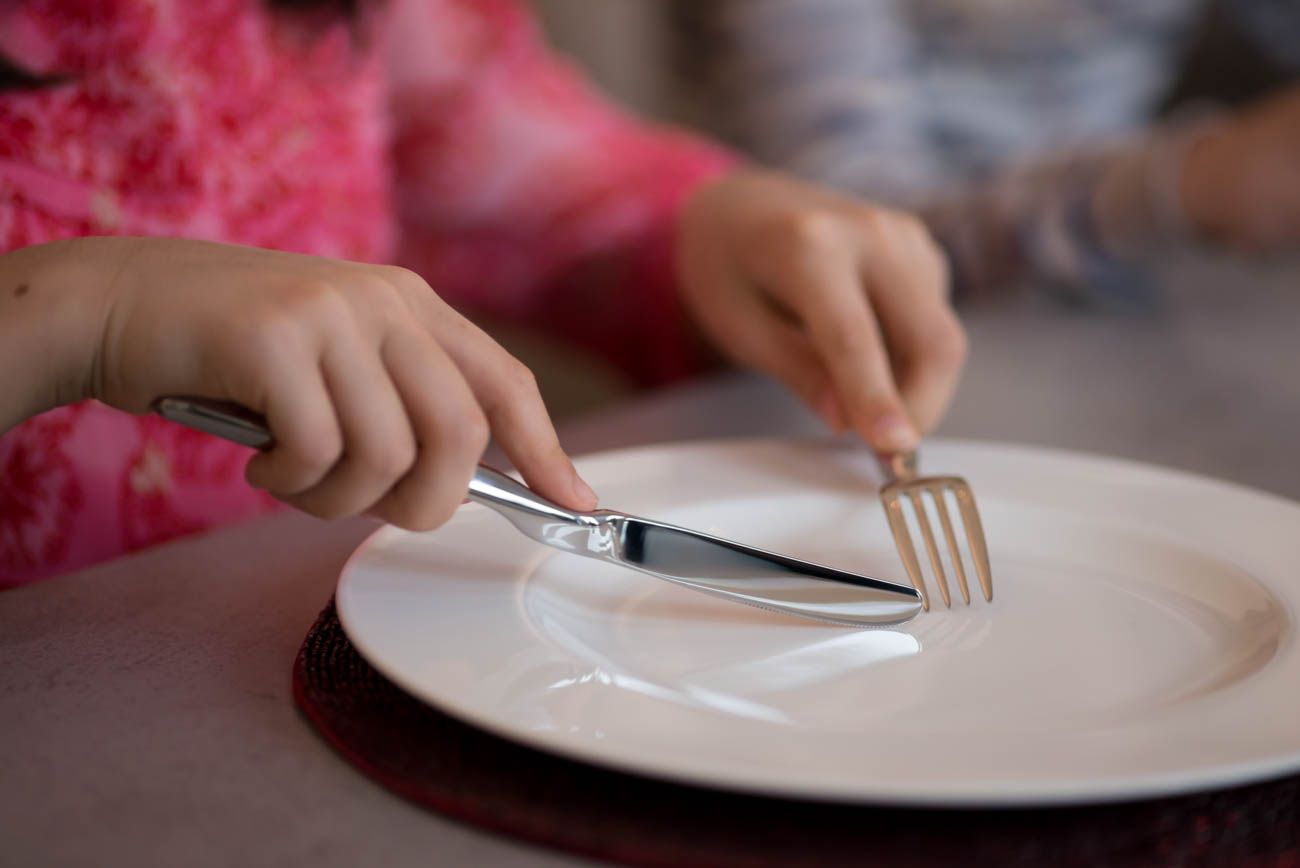

0 thoughts on “What Are Acceptable Table Manners?”